Picture this: A client reaches out for assistance via a short conversation, an email, or even a social media DM. They hope for a rapid, individual response, but behind the scenes, support teams are handling messages across an infinite number of channels. On both sides, delays accumulate, stress intensifies, and resentment escalates.
Does it ring a bell?
More than before, companies are under pressure to provide 24/7 customer support without sacrificing speed or quality. Relying only on human actors is no longer practicable at scale. Artificial intelligence (AI) enters here not to replace people, but to improve and automate customer service processes rapidly, effectively, and in a customer-centric manner.
AI in customer support has evolved far beyond basic, pre-set answers. From automated FAQ systems that guide customers to relevant solutions to smart AI-powered chatbots that manage complex questions and escalate when necessary, AI for customer support is transforming how support teams function. Today’s systems understand context, analyze intent, and engage users in natural, humanlike conversations.
From static FAQ pages to advanced generative AI customer support tools, this blog explores the transformational journey. We’ll cover the different types of AI tools for customer support, their benefits, practical implementation tips, and real-world use cases to help you deliver faster, smarter, and scalable service.
Why Automate Customer Support?
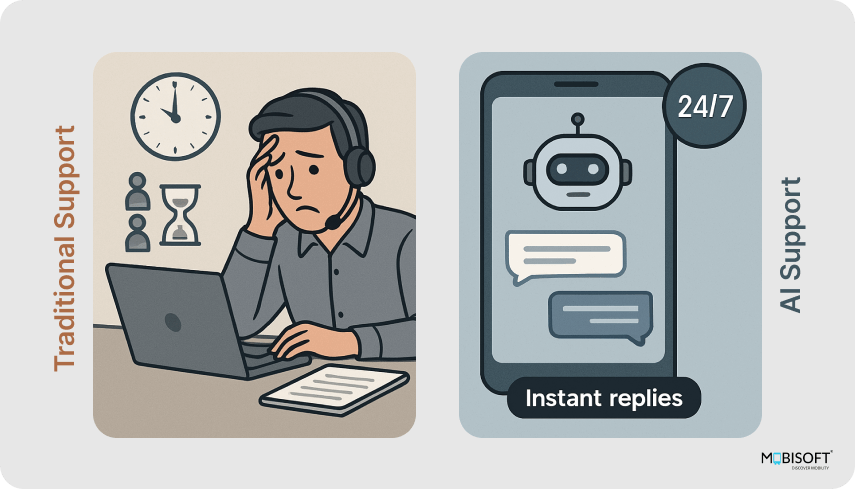
Customer service automation has undergone a radical transformation in its landscape. Consumers no longer tolerate long wait times, generic answers, or repeated interactions in an era of instant gratification and constant connectivity. They anticipate immediate, individualized help on any channel at any time. As these expectations grow, the pressure on customer support AI teams to provide quicker, better, and more scalable service also increases.
Here is where automation in customer service turns vital, not just convenient.
Rising Customer Expectations
Modern consumers want answers right away. Users anticipate real-time answers, whether they are tracing an order, solving a problem, or querying a product-related question. They also want interactions to be smooth and contextual, free from repetition or platform changing. Failure to satisfy these expectations can cause bad ratings, lost revenues, and waning client loyalty.
Operational Efficiency and Cost Savings
Manual assistance demands a lot of resources and time. Scaling a human agent team becomes costly and ineffective as your user base expands. Automating regular operations like responding to frequent queries or routing tickets using automated customer support tools frees up human agents to manage high-value, sophisticated cases. This not only cuts expenses but also raises team morale and output.
Challenges of Scaling Human-Only Support
While it might appear like a quick fix, more agents present new problems: training costs, variable service quality, lengthy onboarding times, and burnout. Sustaining continuous coverage across time zones becomes increasingly challenging. Customer support automation AI offers consistency, scalability, and around-the-clock availability, free from the need for ongoing recruiting, which helps to alleviate these problems.
The Shift Toward Self-Service and Omnichannel Engagement
Another significant trend is the rising preference for self-service. Customers want more and more help for themselves using FAQs, knowledge databases, or AI assistants before contacting a live representative. Given the growth of live chat, mobile applications, social media, messaging platforms, and communication channels, the necessity of a consistent, integrated support experience becomes imperative.
How AI in Customer Service Transforms Support Operations
Artificial intelligence in customer support enables businesses to address all of these issues simultaneously. AI-driven solutions like chatbot customer service, virtual assistants, and smart ticketing systems can swiftly react, readily scale, and customize interactions using historical data and consumer desire.
They lighten the burden on human agents, allow companies to fulfill contemporary support requirements without bankrupting them, and work around the clock. Automating customer service with AI helps future-proof support systems while also meeting current consumer expectations.
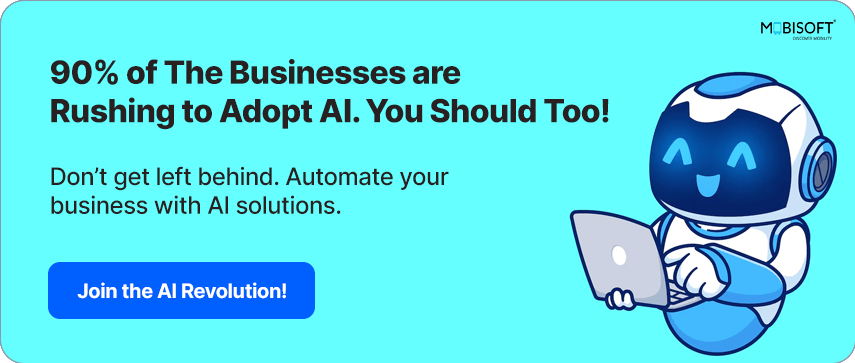
Types of AI-Powered Customer Support Solutions
Businesses wanting to update their support systems are finding a broad range of AI-powered customer support solutions, each providing unique means of customer experience automation and enhancement. Still, not all automation is made alike. Let's go over the main kinds of AI-driven customer care solutions and how they're changing the support environment.
Systems based on rules versus systems driven by artificial intelligence. First of all, it's crucial to know the base. Automated customer support systems fall under two basic classes:
Rule-Based Systems
Rule-based systems function on predetermined logic, if this, then that scenarios. For basic, recurring chores like guiding clients to an FAQ or checking an order status, they are ideal. They cannot grasp intent or context, though.
AI-Driven Systems
On the other hand, AI-driven systems use machine learning for customer service and natural language processing (NLP) to understand and respond intelligently. Real-time query interpretation, historical interaction learning, and ongoing improvement of these systems make them far more effective and adaptable.
AI Chatbots for Customer Service: Your First Line of Support
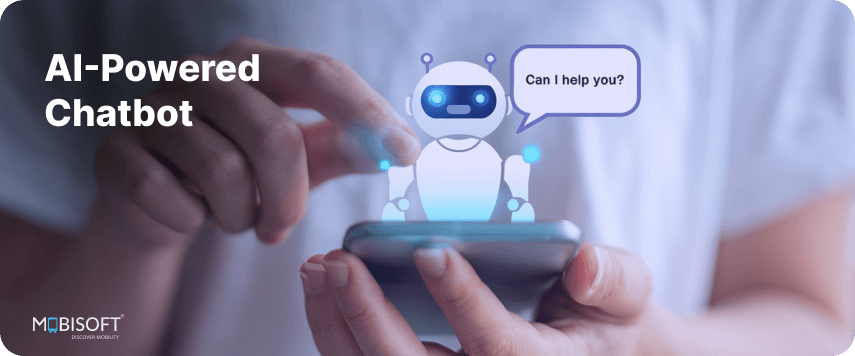
Often representing AI in customer service, chatbots exist in several varieties:
Scripted Chatbots
Rule-based and following decision trees, scripted chatbots. They help to gather data before transferring to a person, to guide users through simple procedures, or to respond to frequently asked questions.
NLP-Powered Chatbots
These AI-enhanced bots can detect intent, comprehend natural language, and generate responses more humanlike. They adjust to how actual consumers talk, hence reducing irritation and simplify communication.
Proactive vs. Reactive
Proactive chatbots can jump in with useful ideas, such as support when someone gets stuck at checkout; traditional bots wait for the user to start a conversation (reactive).
Virtual Assistants: Smarter, More Contextual
Though chatbots are ideal for quick, transactional chats, AI-powered virtual assistants are meant for more thorough involvement. Beyond Q&A, they can undertake more sophisticated tasks, including:
Context-aware Conversations
They modify their replies by what you have requested before, therefore creating conversations that feel personal and ongoing
Voice-enabled Support
Consider Alexa or Siri, but created for your organization. Naturally speaking, customers can enjoy hands-free support experiences thanks to the assistant's knowledge and verbal responses.
AI-Enhanced Ticketing Systems
AI for customer support drives what goes on behind the scenes, as well as what lives on the frontlines:
Smart Tagging and Categorization
AI can automatically classify incoming tickets depending on keywords, sentiment, or urgency.
Routing and Prioritization
AI can route tickets to the most suitable agent, guaranteeing quicker and more accurate replies instead of manually assigning them. For customer support AI teams handling large volumes of requests, these features increase efficiency and accuracy.
These tools help streamline operations, especially for AI in customer service teams, and improve overall effectiveness
Email and Messaging Automation
Support is more than just live chat. Many consumers still use messaging apps and email. AI in customer service assists by:
- Using past contact history and combined data, autoreplies to frequent questions (e.g., "Where is my order?")
- Summarizing long email threads for agents, therefore, they spend less time reading and more time resolving.
- Sentiment analysis to find angry or frustrated clients so they may be escalated or prioritized.
AI Chat Systems and Voice AI: The Future of Customer Interaction
Navigating interminable “press 1, press 2” menus is not something everyone enjoys. That’s where AI-powered customer support via IVRs (Interactive Voice Response systems) shines:
- Speech recognition allows customers to speak freely instead of pressing buttons, a feature supported by modern AI chatbots for businesses.
- AI call routing understands intent and directs the call to the appropriate department or agent, a human need.
These solutions are especially useful for high-volume customer service automation environments like healthcare, banking, and telecoms.
Top AI Customer Support Platforms and Tools to Consider
Many modern AI customer support platforms now come with built-in capabilities or seamless integrations. A few worth mentioning:
- Zendesk AI and Freshdesk Freddy AI for intelligent ticketing and chat.
- Intercom and Drift for conversational chatbots and automation.
- Google Dialogflow, Microsoft Bot Framework, and IBM Watson Assistant for building custom AI assistants.
Each platform offers unique strengths depending on your support automation goals, customer interaction volume, and preferred channels of communication.
AI in customer support isn’t one-size-fits-all. Whether you’re starting with simple automated customer support or building a sophisticated assistant, there’s a solution for every growth stage.
As we’ll explore next, it’s not just about the technology, it’s about transforming the way you serve your customers.
Building Blocks: From FAQs to Chatbots
Businesses usually picture leaping right into intelligent, conversing chatbots for customer support when they consider automating service with artificial intelligence. But effective customer service automation is more like building a home; you have to begin with a firm base. For most firms, that groundwork starts with something easy and familiar:
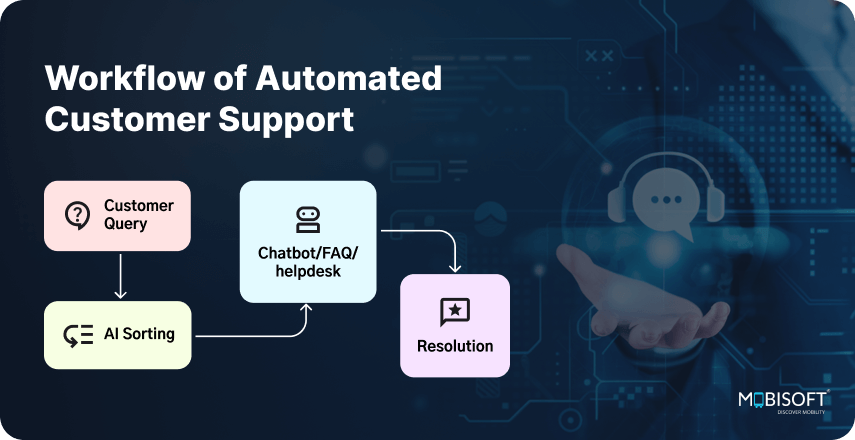
From Static to Smart: Transforming Your FAQs into AI-Powered Support
Let’s go step-by-step through how to evolve from static FAQs to intelligent, AI-driven customer support.
Step 1: Start with FAQs (Your Foundation)
Your FAQ page is often where consumers first go looking for assistance. This explains the significance of getting things right.
Begin with actual consumer data to organize your knowledge base. Common support tickets, chat logs, and feedback forms help you to see what most people are inquiring about. Organize these questions into distinct categories and make replies concise, straightforward, and readily scanned.
This also entails getting your material ready for AI-readiness. AI support tools depend on structured, consistent information. Even the most clever AI-powered chatbot will struggle if your content is scattered. Think of your FAQ as the brain that fuels your AI customer support infrastructure.
View your FAQ as the brain fueling your artificial intelligence. Build intelligent, responsive generative AI chatbots that handle FAQs and beyond.
Step 2: Smart Search and Contextual Help
It's time to make your FAQ more accessible and more intelligent once it's in shape.
You can power your help center with AI in customer service using smart search that understands what a consumer is truly seeking, even if they don’t express it perfectly. Instead of just keyword matching, artificial intelligence in customer support reads intent and presents the most relevant answers, enhancing user experience significantly.
Further, you can deploy contextual help: proactive recommendations triggered by user behavior. For instance, if someone lingers too long at checkout, a helpful message like “Need assistance with payment methods?” may appear. This is an example of proactive chatbot customer service, helping even before the customer asks.
Step 3: Interactive Chatbots
Here’s where the fun begins with interactive AI chatbots.
Once your knowledge base is established, chatbot customer service can be layered on top to deliver those answers conversationally. Using Natural Language Understanding (NLU), these bots interpret diverse questions (e.g., “Where’s my order?” vs. “Has my item shipped?”) and reply using info from your FAQs or help center.
Unlike static pages, AI chatbots for customer service provide immediate help, collect data, and guide users to complete actions, all without human intervention. It’s a smarter, scalable form of automated customer support that enhances responsiveness and user satisfaction.
Step 4: Human + AI Hybrid Models
Even the most intelligent artificial intelligence is imperfect; it does not have to be. Good support networks combine artificial intelligence effectiveness with human compassion. Once a bot hits its threshold, it should automatically transfer to a live agent. This transfer should include the entire chat history and context so the consumer does not have to repeat themselves.
Behind the scenes, a single support dashboard could enable human agents and artificial intelligence to work together. Agents may view AI's recommendations, follow communication flows, and jump in if required. Speed and precision from artificial intelligence combine with nuance and care from human agents in this hybrid approach, therefore giving the best of both worlds.
Businesses can advance their support from passive FAQ pages to fully AI-augmented customer service with this step-by-step approach, making assistance not only quicker but also more intelligent and more human. From cost reductions to happier consumers, we will next investigate the tangible advantages of artificial intelligence in support.
Key Benefits of Implementing AI in Customer Support Systems
Incorporating artificial intelligence in customer support changes how you handle your support operations and serve your clients, not just about keeping up with trends. Properly handled, artificial intelligence elevates your personnel and opens a variety of clear advantages for your company and your clients rather than displacing them.
Always On: 24/7 Availability
Unlike AI, neither sleeps, takes holidays, nor requires breaks, unlike human agents. Your consumers will thus be able to get assistance any time, anywhere, day or night. For companies worldwide or any brand looking to be customer-focused, this sort of all-day availability can be a game-changer, especially when powered by 24/7 customer support AI systems.
Faster Responses, Quicker Resolutions
Everyone dislikes waiting in a support queue, especially for something basic. Quick answers to often asked questions and more complicated problems toward the appropriate person can be given by artificial intelligence tools like chatbot customer service or automated ticket routing. The result? Shorter waiting times, faster resolutions, and happier customers driven by efficient AI customer support.
Cost-Effective and Scalable
Large support staff hires and training cost money. AI lets you manage more queries without adding headcount. At once, AI chatbots for customer service can handle thousands of conversations, enabling your human agents to concentrate on higher-value, complicated cases. This produces a very effective automated customer support system that grows with you without increasing your expenses.
Discover scalable AI solutions for business that enhance every aspect of customer support.
Personalization at Scale
Artificial intelligence is about intelligent automation, not only automation. Real-time answers can be customized based on user history, tastes, and prior interactions of modern artificial intelligence. Brands may provide individualized experiences to hundreds of consumers at once thanks to it; this would be impossible with a human-only team.
Consistent Messaging and Compliance
Humans falter; AI does not, at least not in the same manner. AI guarantees every customer receives consistent, compliant information every time, whether they are following support scripts, legal disclaimers, or brand tone. In industries like finance, medicine, and insurance, all subject to control, this is especially useful.
Continuous Learning and Improvement
Among the most potent features of artificial intelligence is its ability to get wiser over time. Each encounter helps machine learning for customer service models develop by learning what works and what does not, as well as how to grow. This implies your support network is always changing, absorbing knowledge from your clients and improving at meeting their needs through AI support tools.
Simply said, AI in customer service is a competitive edge rather than only a tool. It enables you to give better service, speed faster, and accomplish more with less, all while providing the experience your clients expect.
Common Challenges of AI Customer Support and How to Solve Them
AI in customer support offers incredible potential, but it’s not without its challenges. Like any technology, success depends not just on what you deploy, but how thoughtfully you implement and maintain it. Let’s explore some common hurdles businesses face and how to overcome them.
Misunderstanding Customer Queries
Even the smartest AI can struggle with human language. People speak in different ways, use slang, make typos, or ask vague questions. This can lead to misinterpreted queries or irrelevant answers, frustrating users.
How to fix it:
Invest in Natural Language Understanding (NLU) models that can interpret intent, not just keywords. Train your AI for customer support using real customer conversations, and continually fine-tune it as new patterns emerge.
Poorly Designed Conversation Flows
A chatbot that feels like a maze or keeps repeating “Sorry, I didn’t get that” can quickly alienate customers. If the flow isn’t intuitive, people will abandon the experience, or worse, your brand.
How to fix it:
Design your chatbot customer service interactions like a conversation, not a form. Map out flows with empathy. Include clear options and always give users a way out, like asking to “speak to a human.”
Inaccurate or Outdated Knowledge Base
Your AI is only as good as the content it relies on. If your FAQ or help articles are outdated or inconsistent, the AI will serve up wrong or confusing information.
How to fix it:
Conduct regular audits of your knowledge base. Update content based on product changes, support trends, and customer feedback. Make this a living, breathing resource, not a set-it-and-forget-it task.
Customer Resistance to AI-Only Systems
Some customers just don’t want to talk to a bot, especially if their issue is complex or emotional. Relying too heavily on automation can leave them feeling unheard.
How to fix it:
Always offer a human fallback option. The best systems use AI for customer engagement to handle the basics, then escalate to a human when needed, seamlessly and with context.
Data Privacy and Compliance
With AI-powered customer support systems accessing sensitive customer data, privacy and compliance are non-negotiable. Failing to comply with regulations like GDPR can damage trust and lead to serious consequences.
How to fix it:
Work with platforms that offer enterprise-grade AI in business support, clear data handling policies, and compliance features. Also, train your team on how customer data is used, stored, and protected.
AI in customer support systems is powerful, but it’s not plug-and-play. With thoughtful design, regular updates, and a human touch, you can overcome these challenges and deliver a support experience that truly works for your customers.
Best Practices for Implementing AI in Customer Support
Integrating AI in customer support strategy can drive incredible results, but only if it’s done with intention. Like any powerful tool, success lies not just in adopting AI, but in how you use it. Here are some proven best practices to help you roll out AI-powered customer support in a way that’s effective, scalable, and customer-friendly.
Define Clear Objectives and Metrics
Before jumping in, ask yourself: What do we want AI for customer support to achieve? Is the goal to reduce ticket volume? Improve response times? Enhance customer satisfaction?
Start by setting clear objectives and tying them to measurable KPIs, such as first response time, resolution rate, or deflection percentage. Without defined metrics, it’s hard to gauge success or know what needs improvement.
Start Small and Iterate
It’s tempting to go all-in with a full-featured chatbot customer service or AI system, but the best approach is to start small. Begin with something manageable, like automating answers to your most common FAQs
As you gain insights and confidence, expand the AI’s capabilities. This iterative approach reduces risk and allows you to learn and adapt as you go.
Choose the Right AI Tools and Platforms
Not all AI customer support systems are created equal. Choose a platform that fits your business size, tech stack, and customer needs. Look for features like easy integration, multi-language support, NLU capabilities, and human handoff.
Popular platforms like Zendesk AI, Intercom, Freshdesk Freddy, and Dialogflow offer scalable options with robust documentation and support. Explore our AI strategy consulting services to align automation tools with business goals.
Focus on a Great User Experience (UX)
AI should make support easier, not frustrating. Design AI chatbots for customer service and virtual assistants with natural, conversational flows. Avoid robotic scripts, and always give customers a way to rephrase or navigate elsewhere.
Use simple language, clear options, and thoughtful prompts. The smoother the experience, the more likely users are to trust and engage with the AI-driven customer service experience again.
Ensure Smooth Human Handover
Even the best AI can’t solve everything. When a bot hits its limit, the transition to a human agent should be seamless, with the full context and chat history passed along. This ensures a consistent experience within your AI customer support framework.
This avoids the dreaded “starting over” moment and reassures customers that a real person is there when they need it most.
Monitor Performance with Analytics
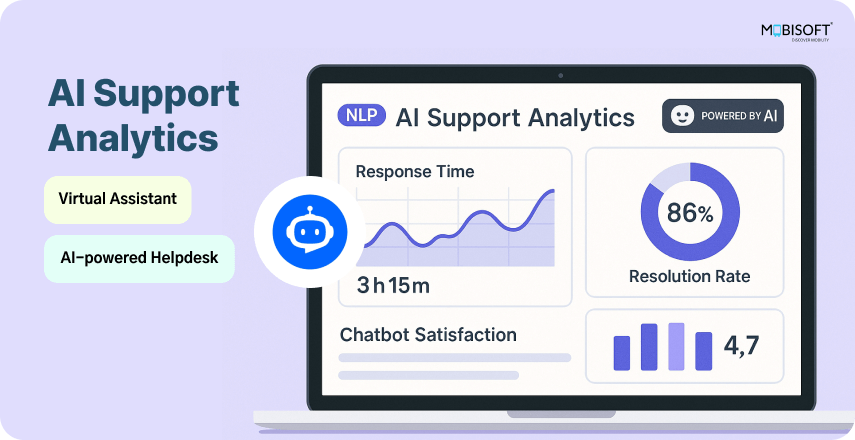
Once your AI for customer engagement is live, keep a close eye on how it’s performing. Use analytics to track things like:
- Response accuracy
- Abandonment rates
- Escalation volume
- Customer satisfaction (CSAT)
These insights help you spot gaps, optimize flows, and prove ROI to stakeholders. Performance tracking is key to the long-term success of any automated customer support initiative.
Regularly Train and Update AI Models
AI isn’t a “set it and forget it” solution. Continually train your models using real support tickets and customer feedback. As products evolve and customer behavior shifts, your AI support tools should evolve too.
Frequent updates ensure relevance, accuracy, and long-term success.
Collect Feedback from Customers and Agents
Lastly, don’t forget to ask the people who matter most, your customers and your support team. Their feedback can uncover blind spots, identify friction points, and highlight opportunities for improvement.
Create simple ways for them to share feedback after AI-powered customer support interactions, and use it to refine the experience. With these best practices in place, AI becomes more than a support tool; it becomes a strategic asset that grows with your business, your team, and your customers.
Real-World AI in Customer Support: Case Studies Across Industries
AI in customer support is not just a futuristic concept; it’s already delivering measurable impact across industries. From faster response times to significant cost savings, here’s how companies are putting AI-powered customer support to work in the real world.
E-commerce: Fast, Frictionless Customer Service
In the fast-paced world of online shopping, customers expect instant answers, especially around order status, shipping, and returns. Many e-commerce brands now use AI chatbots for customer service to handle product-related queries, delivery tracking, and refund processes without any human intervention.
For example, a leading fashion retailer implemented an AI chatbot that deflected over 65% of incoming queries, reducing average response time by 70% and freeing up human agents to focus on high-touch issues like sizing help and payment issues.
SaaS: Automating Tier-1 Technical Support
In SaaS companies, support teams typically deal with large numbers of mundane, Tier-1 tickets like password reset, login issues, or general troubleshooting. Automated customer support systems based on AI can resolve these issues easily, which can lighten the burden on engineering and support teams.
A mid-sized CRM implementation included an AI-powered helpdesk as part of its support center, resulting in a staggering 30% reduction in agent workload. Concurrently, customer satisfaction (CSAT) scores were boosted by 15% as a result of the quicker resolution times.
Banking & Finance: Secure, Scalable AI
Banks and fintech firms are using AI for customer support to answer balance inquiries, help customers with KYC operations, and even inform them of suspicious activity.
A digital bank rolled out a conversational AI customer support system across its mobile app and website. The assistant resolved 80% of Tier-1 questions, lowered average wait times from 2 minutes to less than 15 seconds, and stayed fully compliant with data privacy regulations.
Explore real-world AI-powered chat solutions through our energy-sector case study.
Healthcare: Smarter Scheduling and Support
Organizations in healthcare are implementing AI in customer service for appointment booking, symptom checking, and insurance queries. This system reduces the burden on administrative personnel and improves access for patients.
A large chain of clinics deployed a virtual assistant for customer service that successfully fulfilled over 10,000 appointment requests per month. Staff time on scheduling declined 40%, and patient satisfaction ratings improved because hold times were shorter and availability was higher.
AI is delivering not only efficiency gains in customer support but also cultivating faster, smarter, and more human experiences at scale. See how these benefits come to life in our real-world chatbot implementation for a global healthcare provider.
The Future of AI Customer Support: Trends, Tools, and Team Integration
AI customer support systems are evolving from reactive helpers to proactive partners. The future of AI in customer support is not just quicker reactions; it’s about intelligent, human-centric service.
Predictive Support That Anticipates Needs
AI will progressively forecast problems before they arise rather than expecting consumers to request assistance. Generative AI for customer support can identify possible issues, like a billing mistake or product failure, by looking at usage patterns and proactively assisting. Predictive service can significantly increase loyalty and retention.
Emotional Intelligence Through Sentiment Analysis
AI is also developing its ability to understand emotional context. Using AI support tools with advanced sentiment analysis, systems will be able to identify irritation or confusion and either adjust the tone or escalate to a human agent, making customer interactions more sensitive and intelligent.
Voice Bots and Multimodal Interfaces
We are already witnessing an increase in voice artificial intelligence, and it is only going to get more pronounced. Customers will increasingly communicate through natural speech, aided by visual or text-based features when necessary, whether via smart speakers or phone-based voice bots. These multimodal interfaces will provide more vivid, more readily available experiences.
AI Co-Pilots for Human Agents
AI is a strong co-pilot for agents as well as consumers. Future support systems will enable agents to work more quickly and cleverly by providing real-time recommendations, autofill responses, and past interaction summaries.
Deep CRM and CDP Integrations
To deliver context-rich answers, artificial intelligence will interface with CRM and consumer data platforms (CDPs). This means that support talks will grow upon consumer history, preferences, and behavior rather than begin from scratch, hence delivering extremely individualized service.
The AI + Human Symbiosis
The future is not AI against humans; rather, it is AI with humans. Combining the pace and scope of artificial intelligence with human empathy and intuition, the best support models will produce experiences that seem smooth, smart, and really beneficial.
Final Thoughts: Scaling Customer Support with AI-Powered Automation
AI is now a necessity to expand client support in today's fast-moving, always-on digital environment; it is not only a nice-to-have. From managing FAQs and repetitive inquiries to facilitating smart chatbots and predictive help, AI in customer support lets companies serve more consumers quicker and better without compromising quality or personalization.
But the trip need not be too much to handle. Starting with little victories like automating customer support for typical inquiries, then slowly layering in more sophisticated tools like sentiment analysis, voice AI, and AI-powered virtual assistants, the most successful businesses use a phased strategy.
Now is the time to investigate how customer service automation can simplify your customer service processes, whether your company is a growing start-up or an established one. The advantages, cost savings, better customer satisfaction, and 24/7 customer support AI service are just too great to overlook.We assist companies like yours at Mobisoft Infotech in integrating AI-driven customer support solutions customized to your needs. We provide the tools, knowledge, and strategic advice you need to get it right, whether you are just starting or set to scale.
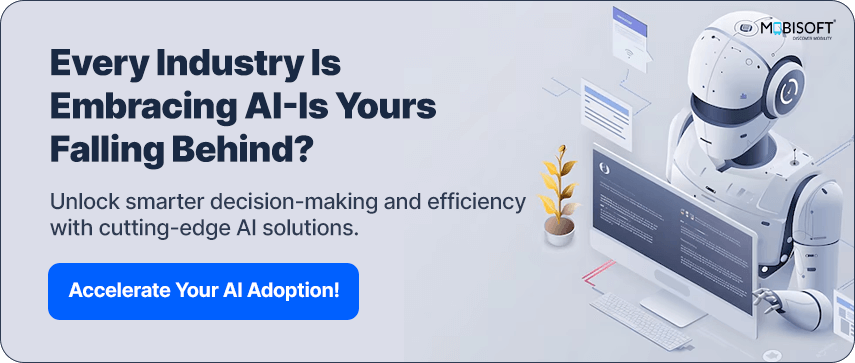

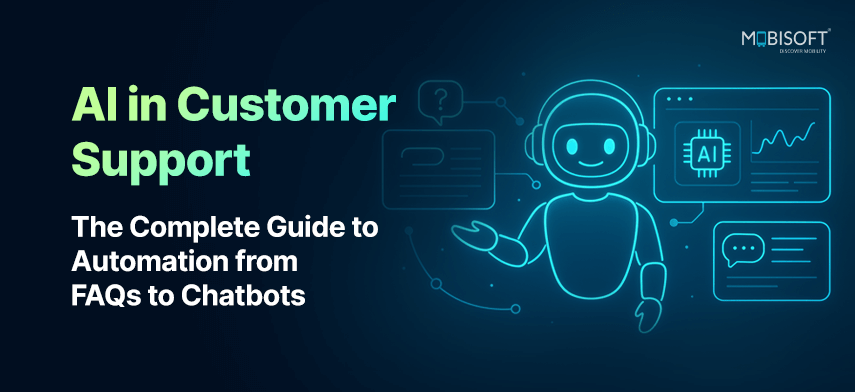


 July 16, 2025
July 16, 2025


